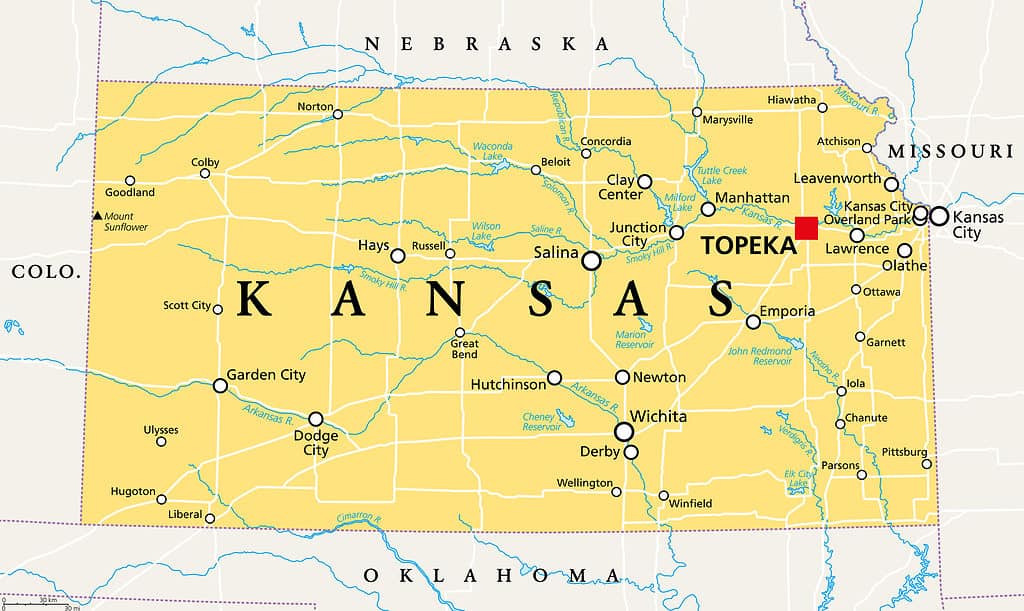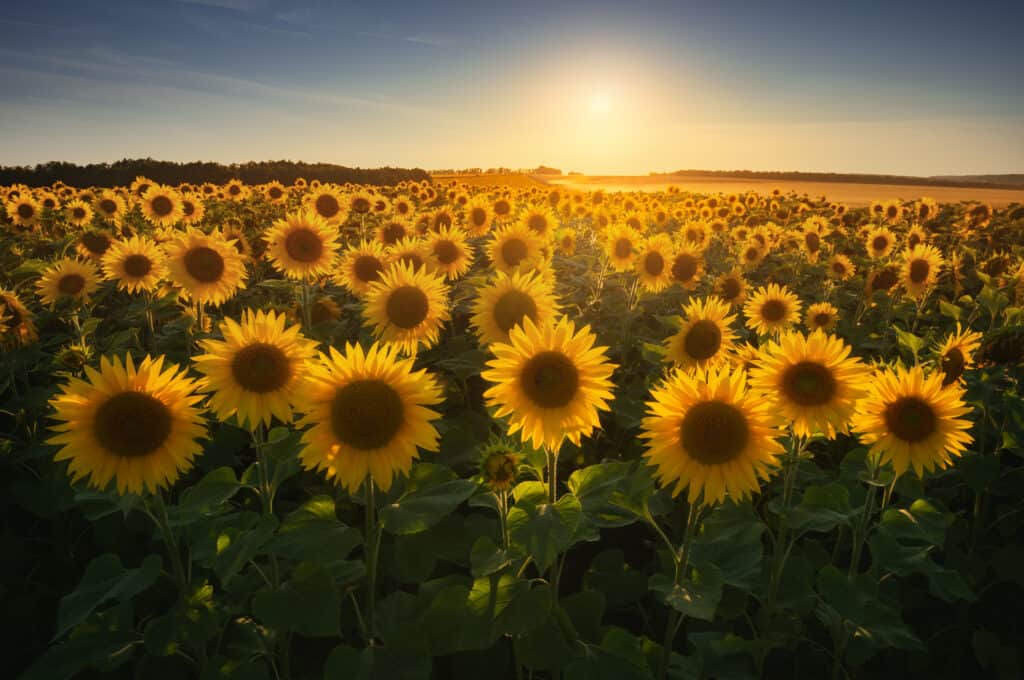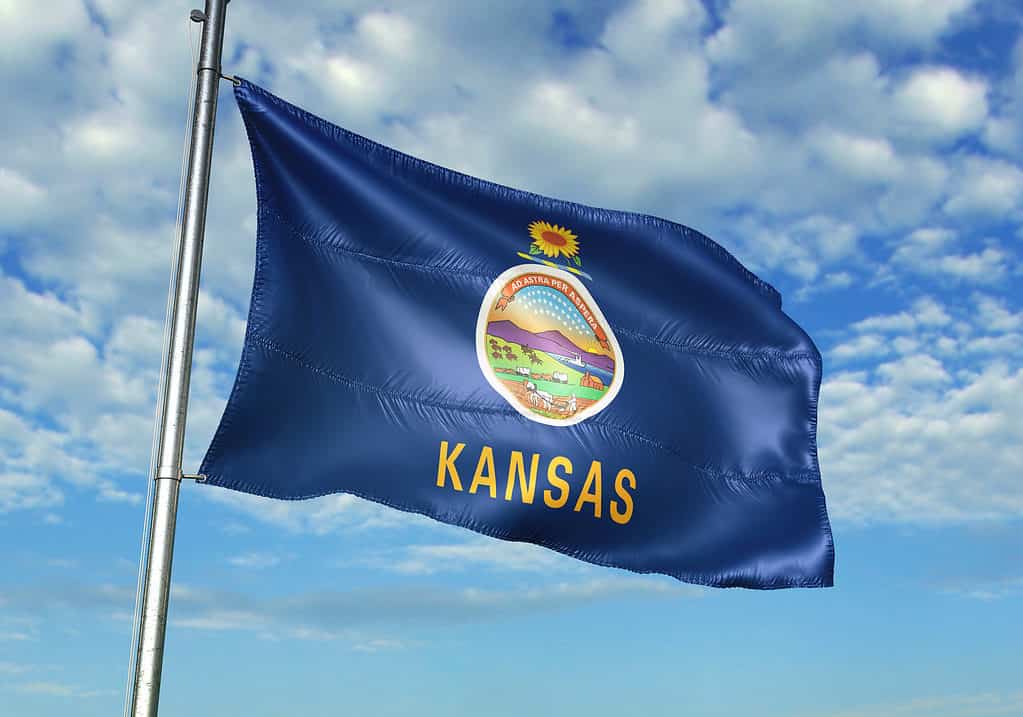Flags are brightly colored symbols which are flown all around the world. For many, they’re just something that is there, something that doesn’t really mean a lot at first glance. However, flags are actually much more than that, for they can represent so many different things and even tell a whole story. Some flags represents history, some power, loss, and even hope. But what does the flag of Kansas symbolize? Let’s find out!
About Kansas
Kansas is a landlocked state in the Midwestern United States. Kansas is renowned for being extremely flat and around two thirds of the state is part of the Great Plains, with the eastern third giving way to forests and rolling hills.
For thousands of years Kansas has been inhabited by many Native American tribes. In fact, the state is named after the Kansas River, which was itself named after the Kansa Americans (the Kaw Nation tribe).
The Spanish explorer Coronado was the first European to visit the area in 1541. However, between 1763 and 1803 the area formed part of Spanish Louisiana. Much of the area that today forms Kansas was sold to the US in 1803 and Kansas was first part of Missouri Territory before the Kansas Territory was established in 1854. Kansas achieved statehood in 1861.

Kansas is located in the Midwestern United States, bordered by Nebraska, Missouri, Oklahoma and Colorado.
©iStock.com/PeterHermesFurian
History of the Flag of Kansas
Although Kansas became a state on January 29, 1861 it was one of the few states that did not have a flag until 1927. However, it was not for lack of trying as attempts had been made since 1915 to adopt a state flag. In 1915 the state governor, Arthur Capper, wrote to other states to ask them if they had a flag and how they went about designing one.
In 1916 there was a competition held to design a flag for the state which was won by Esther Northrup. Her design consisted of a tricolor flag of red, white, and blue with a sunflower on a blue background in an upper corner and the state seal in the center of the sunflower. However, the design was not accepted. The debate over the flag continued for many years, although a state banner was adopted in 1925.
The flag of Kansas was initially designed in 1925 by Hazel Avery for a parade on the Fourth of July in Lincoln. It consists of a dark blue field with the state seal in the center and a sunflower – the state flower – above. It was first flown officially in 1927 at Fort Riley for the Kansas National Guard. The flag was modified in 1961 to add the name of the state to the bottom.
The seal of Kansas was adopted in May 1861, only a few months after Kansas became a state. It was designed by John James Ingalls who also proposed the state motto which features on it.

All versions of the flag of Kansas, including the state banner, featured a sunflower, the state flower.
©iStock.com/oleshkonti
Symbolism and Meaning
We mentioned earlier that flags can represent the past and that is certainly true for the flag of Kansas. In fact, all of the images on the seal tell a tale of Kansas’ history. For a start, there are 34 stars across the top and this number is especially important as Kansas was the 34th state to join the Union. Below the stars are mountains with a rising sun in the east.
There is a settler’s cabin with a man ploughing the field with horses in the foreground. This represents the tradition of farming within the state. Behind the cabin is a river with a steamboat on it. This symbolizes the Kansas river and a form of commerce.
Furthermore, there is a wagon train heading west which symbolizes the American expansion, while to the left are two native Americans on horseback chasing five bison. These represents the Kansas plains and the state’s past which is shared with numerous native American tribes.
Additionally, at the top of the seal is the state motto – “Ad astra per aspera”. This is a Latin phrase which means “to the stars through difficulties”. This represents all of the difficulties that Kansas faced in the past – such as Indian attacks, war, and slavery.
The seal aside, the sunflower above is the state flower and it sits over a bar of gold and blue. This bar symbolizes the Louisiana Purchase of 1803. This was a transaction between France and the US when the US purchased 828,000 square miles of land – including the land that would become Kansas.

The flag of Kansas has the state seal at its center filled with images that tell a tale of the state’s history.
©iStock.com/Oleksii Liskonih
Kansas State Banner
Although Kansas did not have a state flag until 1927 it did have a state banner which served much the same purpose between 1925 and 1927. The Kansas state banner consisted of a large sunflower on a dark blue background with the name of the state at the top. The banner was designed to be hung from a horizontal bar rather than being hoisted on a flag pole.
However, many people disliked the state banner. For one, even though the sunflower was the state symbol, some people viewed it as a weed. Also, the way that the banner was designed to be hung meant that it was difficult to march with. However, the final straw came when it was rejected in Washington and was not allowed to be displayed with other state flags. Therefore, although the Kansas state banner remains an official alternative state symbol to this day, it was largely replaced by the official flag in 1927.
Up Next
- Different Flags That Feature Plants
- The Flag of Florida: History, Meaning, and Symbolism
- Discover the 9 Largest Animals in Kansas, and Where You’ll Find Them
The photo featured at the top of this post is © iStock.com/bodrumsurf
Sources
- Britannica, Available here: https://www.britannica.com/topic/flag-of-Kansas
- Kansas Historical Society, Available here: https://www.kshs.org/kansapedia/kansas-state-flag/14498
- US Flags, Available here: https://usflags.design/kansas
- State of Kansas, Available here: http://www.civics.ks.gov/kansas/statehood/statehood.html
Thank you for reading! Have some feedback for us? Contact the AZ Animals editorial team.






